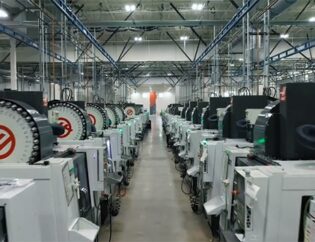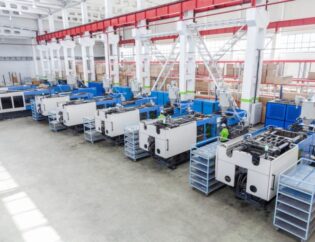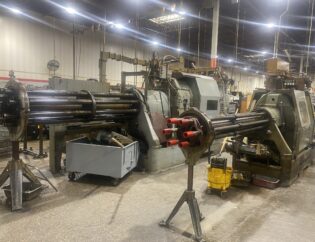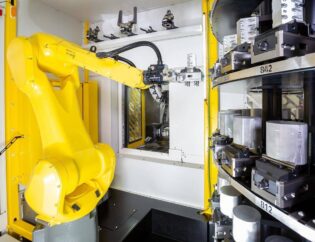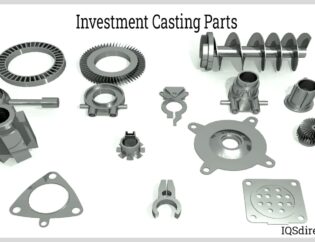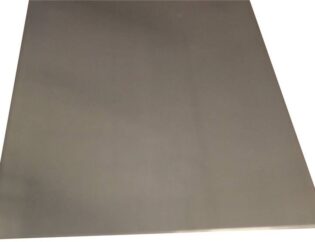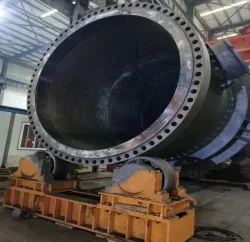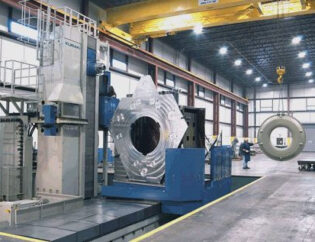Sheet metal design is a critical aspect of manufacturing that influences the functionality, durability, and cost-effectiveness of products. Understanding the principles of sheet metal design can significantly enhance the efficiency of production processes and the quality of the final product. This guide aims to provide comprehensive insights into essential design guidelines that every engineer and designer should consider.
Readers can expect to learn about the fundamental concepts of sheet metal design, including material selection, thickness considerations, and bending techniques. The guide will also cover best practices for minimizing waste and optimizing production efficiency. By mastering these guidelines, designers can create innovative solutions that meet both aesthetic and functional requirements.
Additionally, this guide will delve into common challenges faced in sheet metal design and offer practical solutions to overcome them. With a focus on real-world applications, readers will gain valuable knowledge that can be directly applied to their projects. Whether you are a novice or an experienced professional, this guide will serve as a valuable resource in your design toolkit.
Sheet Metal Design Guidelines: A Comprehensive Guide
Are you striving to master the art of sheet metal fabrication but find yourself lost in a maze of design principles and processes? Designing for sheet metal fabrication requires a keen understanding of numerous guidelines, from material selection and bend radii to tolerances and hole spacing. Whether you’re an engineer, designer, or fabricator, unlocking the secrets of cost-effective and manufacturable designs is crucial to your success. This comprehensive guide will walk you through essential design guidelines, step-by-step fabrication processes, and best practices to ensure quality and efficiency. Ready to transform your sheet metal projects with precision and expertise? Let’s dive in.
Key Design Guidelines and Principles
Material Selection and Geometric Constraints
Choosing the right material for sheet metal fabrication is key to ensuring the final product is strong, durable, and easy to manufacture. Key factors to consider include:
– Material Type and Thickness: Common materials like steel, aluminum, copper, and brass each have unique properties. The thickness of these materials affects both the strength and flexibility of the part, as well as the manufacturing processes that can be used.
– Grain Direction: The direction of the metal’s grain, created during the rolling process, can affect the quality of bends and the overall strength of the part. Cold-rolled metals are often preferred for their durability and consistent grain structure.
Holes and Cutouts
Proper design of holes and cutouts is essential to maintain the structural integrity of sheet metal parts. Key guidelines include:
– Hole Size and Spacing: Make sure holes are larger than the sheet metal thickness to avoid deformation. Also, keep holes at least twice the thickness apart to prevent distortion.
– Edge Distance: The minimum distance from an extruded hole to the edge of the part should be three times the sheet metal thickness to prevent tearing.
– Hole-to-Hole Distance: For extruded holes, maintain a minimum distance of six times the sheet metal thickness to ensure strength.
Bend Radii and Relief
Bend radii and relief are critical considerations in sheet metal design to avoid cracking and ensure proper forming:
– Bend Radius: The bend radius should generally be at least equal to the thickness of the sheet metal.
– Corner Relief: Providing relief at bends helps avoid cracking and ensures smoother forming. The relief for a bend should be at least 2T in width and bend radius + T in length, where T is the thickness of the sheet metal.
Flanges and Edge Considerations
Designing flanges and edges correctly ensures the structural integrity and manufacturability of the part:
– Flange Height: The minimum flange height should be 3.5 times the thickness of the sheet metal to maintain strength.
– Flange Width: Minimum flange width is crucial to avoid deformation and ensure the part’s stability.
Forming and Bending
Effective forming and bending processes are essential for creating accurate and functional sheet metal parts:
– Bend Planning: Plan bending operations carefully, considering bend angles and radii. Utilize machines like press brakes and roll forming machines for precise bends.
– Bend Direction: Avoid multiple bends in the same direction or plan them meticulously to maintain the part’s structural integrity.
Surface Finishing and Assembly
Surface finishing and assembly processes enhance the functionality and appearance of sheet metal parts:
– Surface Finishing: Techniques like grinding, polishing, and coating improve aesthetics and protect against corrosion.
– Assembly: During assembly, ensure proper alignment and fitment using fasteners, adhesives, or welding for optimal performance.
Quality Assurance and Inspection
Quality assurance and inspection are critical to ensuring the final product meets specifications and standards:
– Inspection Methods: Utilize dimensional accuracy checks, surface quality inspections, and integrity tests. Non-destructive testing methods can detect defects without damaging the part.
Design for Manufacturability (DFM)
Incorporating DFM principles ensures that designs are practical and cost-effective to manufacture:
– CAD Integration: Design guidelines should be integrated into CAD files to ensure compliance with manufacturing requirements.
– DFM Tools: Tools like DFMPro help develop high-quality designs at reduced costs by configuring and customizing design rules.
Technical Features Comparison
| Feature | Description | Importance |
|---|---|---|
| Material Type | Different metals like steel, aluminum, and brass have unique properties. | Affects strength, flexibility, and manufacturability. |
| Thickness | Varies from 0.9mm to 20mm, impacting strength and flexibility. | Determines the suitability for various applications. |
| Grain Direction | Orientation of metal grain affects bending quality. | Critical for maintaining part strength during bending. |
| Bend Radius | Minimum radius should equal material thickness. | Prevents cracking and ensures proper forming. |
| Hole Diameter | Should be larger than material thickness. | Avoids deformation during fabrication. |
| Edge Distance | Minimum distance from holes to edges should be three times thickness. | Prevents tearing and maintains structural integrity. |
Types of Sheet Metal Fabrication
| Type | Description | Applications |
|---|---|---|
| Laser Cutting | Uses a high-energy beam to cut through materials. | Ideal for intricate designs and prototypes. |
| CNC Turret Press | Utilizes computer-controlled machines for precision cutting and forming. | Suitable for low to medium production runs. |
| Stamping | Involves pressing metal sheets into desired shapes using dies. | Common in high-volume production for automotive and appliance parts. |
| Press Brake Forming | Bends metal sheets using a press brake machine. | Used for creating angles and flanges in sheet metal parts. |
| Welding | Joins metal parts using heat and pressure. | Essential for creating strong, durable assemblies. |
Conclusion
Understanding sheet metal design guidelines is essential for creating high-quality, manufacturable parts. By considering material selection, geometric constraints, and fabrication processes, designers can optimize their designs for efficiency and cost-effectiveness. Whether you are working on prototypes or large-scale production, adhering to these guidelines will ensure that your sheet metal projects meet the required standards of quality and performance. For further insights, you can explore resources from domains like www.smlease.com, geomiq.com, cdn.thomasnet.com, f.hubspotusercontent00.net, and shop.machinemfg.com.
FAQs
Related Video
What are the key design guidelines for sheet metal fabrication?
Key guidelines include selecting appropriate materials, maintaining bend radii at least equal to the sheet thickness, ensuring proper hole spacing and diameters, and adhering to geometric constraints like minimum flange heights.
What factors should be considered for material selection in sheet metal fabrication?
Consider durability, corrosion resistance, strength, weight, cost, and fabrication compatibility when selecting materials for sheet metal fabrication.
What are the main steps involved in the sheet metal fabrication process?
The main steps include design and prototyping, material selection, cutting, bending and forming, welding and assembly, surface finishing, inspection, and final assembly.
How do you ensure the quality of sheet metal fabricated parts?
Quality is ensured through rigorous quality control processes, thorough inspections, and adherence to design guidelines and tolerances.
What are the best practices for designing sheet metal parts for manufacturability?
Best practices include selecting suitable materials, adhering to geometric constraints, designing bends with sufficient relief, and optimizing for efficient fabrication processes.

